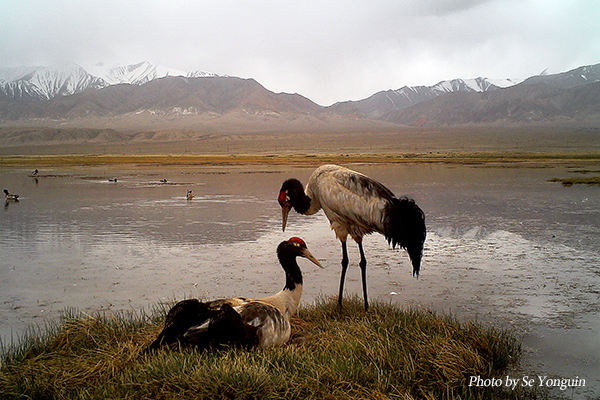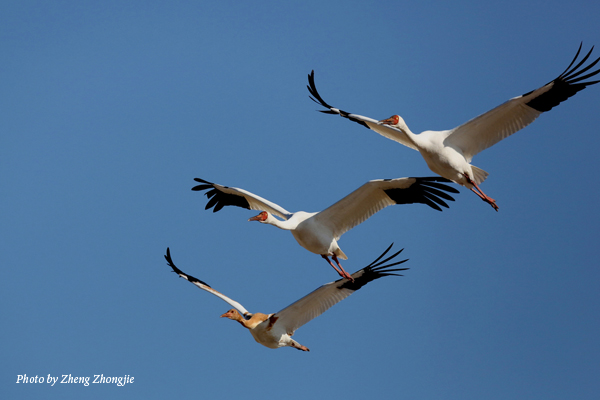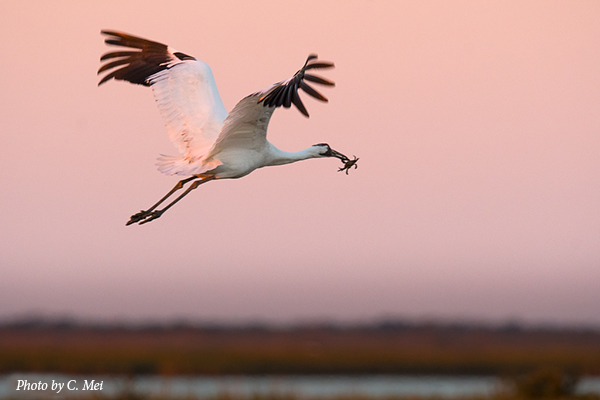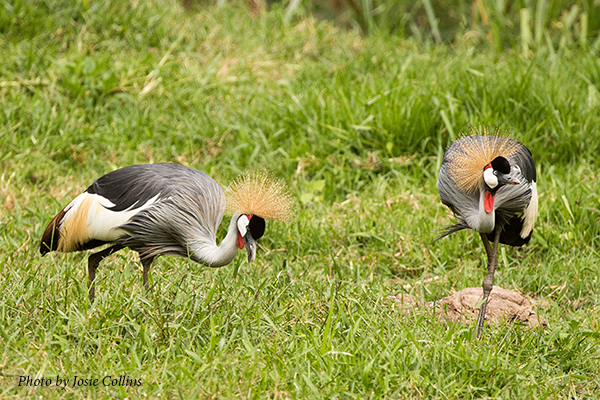
Dear Friends,
I hope this message finds each of you in good health and coping as best as possible with these challenging times. As the pandemic spreads across the globe, COVID-19 has reached some of our inner circle of colleagues and friends, but we remain strong and focused on the future.
Last week I wrote about the important opportunities created by increased world attention on the negative impacts of illegal wildlife trade for our own human health. Today, I draw attention to another global crisis affecting all of us—climate change—and the vital lessons we can learn from our response to the COVID-19 pandemic.
At the International Crane Foundation, we have long focused on cranes as modern-day “canaries in the coal mine,” raising awareness about the impacts of climate change on this family of cherished, endangered birds and the wonderful, wild places they (and all of us) need.
Why cranes? Crane are sensitive indicators of changes to our land and water. Our changing climate is already affecting wetlands and their watersheds across large parts of Asia, Africa, Australia, and North America where cranes occur—especially in places where unsustainable land and water development are already taking a toll. Understanding the serious impacts of global warming on crane populations helps us better understand how our changing climate will affect people and places on a global scale.

In the polar regions where the effects of climate change are most pronounced, the low-lying shores where Critically Endangered Siberian Cranes breed are being eroded and submerged by open water as permafrost and ice sheets melt. Carbon released from permafrost is becoming a significant contributor to global greenhouse gas emissions that fuel climate change. The retreat of glaciers in the high-altitude landscapes of central Asia, where vulnerable Black-necked Cranes nest, will greatly reduce the extent of glacial-fed lakes and marshes that sustain biodiversity in this otherwise arid region.
Reduced rainfall runoff and hot, drier conditions on many of Africa’s great floodplains, home to highly threatened Grey Crowned, Black Crowned, and Wattled Cranes as well as elephants, hippos, buffalo, and other iconic bird and mammal life, make them increasingly vulnerable to drought, fire, and invasive species. In South Africa, these changes are forcing new land use practices that spell an uncertain future for endemic Blue Cranes as well.

In Texas, rising sea levels threaten to drown the coastal marshes where rare and Endangered Whooping Cranes thrive in winter. Diminished freshwater inflows, as droughts become more frequent, make these marshes inhospitable to blue crabs and other aquatic life that sustains Whooping Cranes and other wetland-dependent species. Even our abundant Sandhill Cranes are suffering from wetland loss and water stress related to drying climates and water conflict in the western U.S.
To me, there are two profound insights from the current COVID-19 crisis that can help us save our precious biodiversity, and ourselves. First, if we wait until we can see the full impacts of a crisis, it is too late to stop it. The longer we wait to take strong action, the more severe and costly the solutions become. Second, to have our whole society shift behavior to solve a crisis like COVID-19, or climate change, we must genuinely support everyone, especially the most vulnerable. The net benefits of shutting down the global pandemic, or reducing the global impacts of climate change, are clear. But that does not mean that solutions won’t cause serious personal and economic hardship for some, and we need to be both visionary and practicable in making sure that no one is left behind as we transition to a more sustainable development path.

What does that mean for our work? In southern Africa, we are challenging river developers to incorporate climate change into the design and operation of new dams, encouraging alternative energy sources, and making the case for water releases from existing dams to restore vital floodplains like the Kafue Flats that serve as an oasis for most of the world’s Wattled Cranes, people, and diverse wildlife during drought. In East Africa, we are linking wetland conservation for Endangered Grey Crowned Cranes to improvements in public health and food security for communities who are increasingly dependent on wetlands in the face of disease and hunger. We are partnering with local clinics, for example, as malaria-carrying mosquitoes are expanding into Uganda for the first time as temperatures rise.
In China, we are working with the government to improve water management practices in and around Tumuji, Momoge, and other national nature reserves, helping cranes and communities reduce their vulnerability to highly variable weather. This approach helps reduce the risk of resource conflicts and results in more efficient water use. In Texas, we are using our models of how sea-level rise impacts the wintering grounds of Whooping Cranes to secure conservation easements and other set-asides that will accommodate the recovering crane population, and the coastal way of life, under future sea-level conditions.
Cranes can help us understand why we must take aggressive action on climate change to find lasting solutions that work for people and wildlife. Through our work with some of the most vulnerable communities on Earth who share their lands with cranes, we have focused on solutions to climate change that increase community resiliency and provide real livelihood alternatives for the people most affected.
Please support our efforts to manage climate change risks to cranes and wetlands worldwide, promote climate-change resiliency for the communities who share their lands with cranes, and motivate deeper social caring for climate change action.
Next month, I will be giving a FROM THE FIELD WEBINAR on cranes and climate change, I hope you will join me!

Wishing you good health and peace in the days ahead,
Rich Beilfuss
President and CEO
